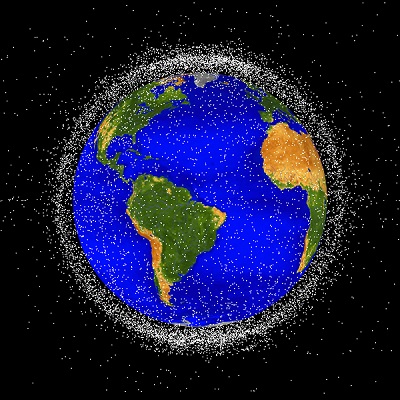According to NASA, orbital debris is an increasingly serious issue that could impede access to space and complicate communication satellite operations, astronaut safety, and more, particularly with the advent of satellite constellation networks. These networks are affected by existing orbital debris — and can create or become orbital debris themselves.
A January 2021 report by the Orbital Debris Research and Development Interagency Working Group Subcommittee on Space Weather, Security, and Hazards, Committee on Homeland and National Security of the National Science & Technology Council, identified three broad methods to reduce the risks posed by orbital debris: reduce the creation of new debris, better track and characterize debris, and find ways to remediate existing debris.
Now, in a report from NASA’s Office of Technology, Policy, and Strategy issued last month titled "Cost and Benefit Analysis of Orbital Debris Remediation,” the agency considers remediation approaches to reducing the risks posed by orbital debris, including moving, removing, or reusing it. According to the report, some approaches could deliver net benefits in less than a decade.
“We know that the number of objects in orbit is growing, and that means we need to look carefully at how we’re analyzing the risks to operators of satellites and spacecraft,” said Bhavya Lal, NASA associate administrator for technology, policy, and strategy. According to Lal, the report takes a different approach than past studies, looking directly at the risks posed by debris rather than using proxies such as sizes or number of debris objects. The newly issued report also more directly considers potential financial costs, Lal said, and reframes the discussion on the benefits of remediation to focus on reducing financial costs to satellite operators in the near term.
The report found that the most effective remediation methods to reduce risks to operators are removing small debris and nudging large debris to avoid collisions. Both of these tasks can be accomplished using lasers.

Computer-generated graphic of objects in Earth orbit that are being tracked from different observation points as of Jan. 1, 2019. Approximately 95% of the objects in this illustration are orbital debris. Low Earth orbit is the region of space within 2000 km of Earth’s surface. It is the most concentrated area for orbital debris. Courtesy of NASA Orbital Debris Program Office.
When directed energy irradiates a piece of debris, it generates thrust on the object. The thrust is too weak to de-orbit the debris, but enough to potentially nudge it out of the way of a collision. This option is presented for large debris.
For small debris, the material can be ablated. In ablation, a laser strikes an object that is ejected approximately perpendicular to the surface and generates thrust in the opposite direction. Generally, the ejected material is a combination of hot gas and plasma and therefore does not contribute new debris to the environment. Ablation generates far greater levels of thrust than photon pressure but requires more powerful laser beams and greater optical precision.
The report said that while such lasers could potentially be used for anti-satellite purposes, lasers for debris remediation are about 1000× less powerful than those that would be used to destroy a spacecraft. Lasers for debris remediation could dazzle or damage satellite sensors, but this can be done using commonly available lower-power lasers. Ground-based lasers as weak as 10 W can dazzle a satellite, while a 40-W laser guide star commonly used by astronomy observatories can permanently damage satellite sensors, according to the report. Therefore, lasers for debris remediation pose about the same level of weaponization risk as ground-based optical astronomy observatories.
Laser systems for remediation provide the added benefit of their potential for tracking and characterization purposes, the report said.
Though still quite nascent and broadly unstudied, the market for debris remediation is estimated to be $100 million or more per year if regulations supporting active debris removal and space sustainability are enacted. “The landscape is broadly international, and U.S. companies might be able to access foreign customers,” the report said. “Firms capable of gaining early mover advantages may enhance national competitiveness, provided that certain policy hurdles can be addressed.”
In terms of policy considerations, the report outlines considerations for business, national security, and matters of debris ownership. The next step, the report said, would be to gather feedback from the space community and use that feedback to prioritize follow-on work to build on current findings.